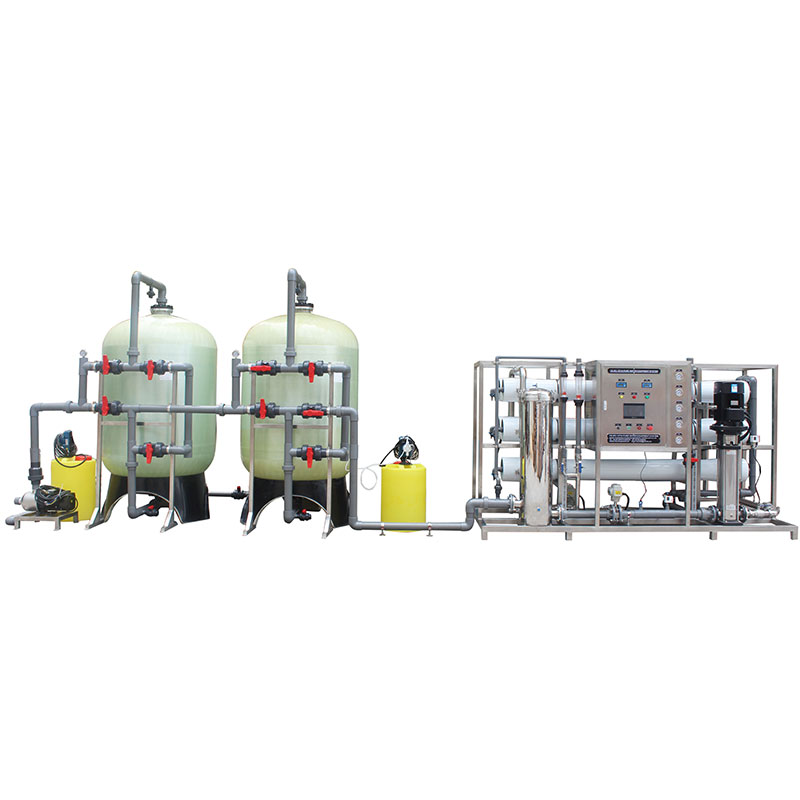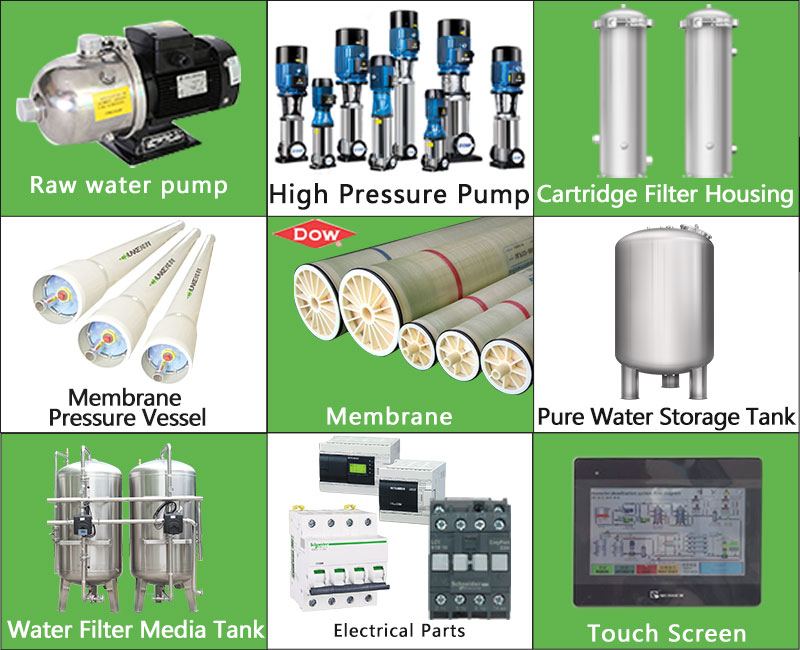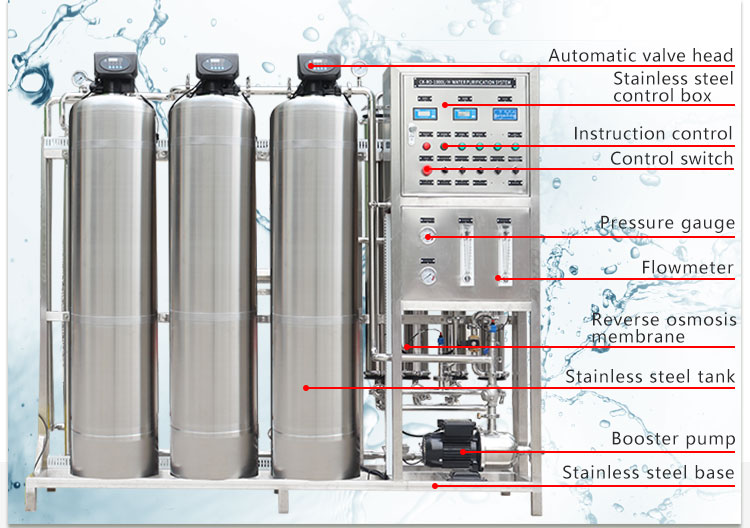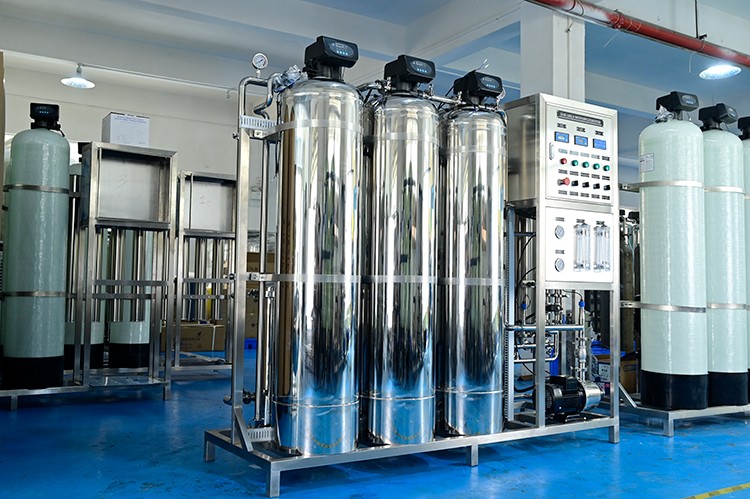How to ensure that reverse osmosis water is safe to drink at home?
Reverse osmosis (RO) technology is a common and widely used water purification method that can effectively remove harmful substances such as dissolved solids, heavy metals, bacteria, viruses, etc. in water. Due to its excellent filtering ability, reverse osmosis equipment has been widely used in household drinking water treatment. However, despite the powerful functions of reverse osmosis water treatment equipment, to ensure that the final output of water is safe and drinkable, certain measures need to be taken in use and maintenance.
This article will discuss in detail how to ensure the safety of reverse osmosis water at home, and give specific suggestions from equipment installation, use, maintenance to water quality monitoring.

Correct installation of reverse osmosis equipment
The installation of reverse osmosis equipment is the first step to ensure water quality safety. Proper installation of equipment can ensure the efficient operation of the reverse osmosis system and prevent contaminants from entering drinking water through unfiltered pathways.
1. Choose a suitable installation location:
Reverse osmosis equipment should be installed in a dry, ventilated and moderately warm place. Avoid placing the equipment in direct sunlight, extreme high or low temperatures, which may affect the normal operation of the equipment and shorten its service life.
2. Ensure that the pipes are tightly connected:
During the installation process, it is necessary to ensure that there is no leakage at all pipe connection points to avoid untreated water from mixing into the purified water. Especially when used at home, if the pipes are found to be loose or dripping, they must be inspected and repaired immediately.
3. Install a pre-filter:
In order to extend the service life of the reverse osmosis membrane and improve the water quality, it is recommended to install a pre-filter before the reverse osmosis system. The pre-filter can effectively intercept large particles of impurities in the water, such as silt, rust, etc., to prevent these impurities from clogging the reverse osmosis membrane and affecting the filtration effect.

Regularly replace the filter element and membrane element
The core components of the reverse osmosis system are various filter elements and reverse osmosis membranes, which directly determine the water purification effect. As the use time increases, the filtration capacity of the filter element and membrane element will gradually decrease, so regular replacement is the key to ensuring water quality safety.
1. Replacement of the pre-filter element:
The pre-filter element is mainly used to remove suspended particles and silt in the water. Normally, the pre-filter element needs to be replaced every 6 to 12 months, and the specific replacement cycle depends on the water quality and frequency of use of the water source. If the household water contains more sediment or other particulate matter, the replacement cycle of the pre-filter should be shortened accordingly.
2. Replacement of activated carbon filter:
Activated carbon filter is used to absorb chlorine, odor, organic matter and some heavy metals in water. The service life of activated carbon filter is generally 6 to 12 months. It is recommended to check the status of activated carbon regularly to ensure that its adsorption capacity has not reached saturation. Once the filter color becomes darker, odor appears or the water quality changes, the filter should be replaced immediately.
3. Replacement of reverse osmosis membrane:
The reverse osmosis membrane is the core component of the entire system and can effectively remove dissolved solids, heavy metals, bacteria and viruses in water. The service life of the reverse osmosis membrane is usually 2 to 3 years, but the specific service time depends on the inlet water quality and daily maintenance. If the filtered water quality is significantly reduced, the TDS value (total dissolved solids) is increased, or the water outlet speed is significantly slowed down, the reverse osmosis membrane should be considered for replacement.
Clean and disinfect the reverse osmosis system regularly
Even the best reverse osmosis system can become a breeding ground for bacteria if it is not cleaned and disinfected regularly, thus affecting water quality safety. Therefore, regular cleaning and disinfection of home reverse osmosis systems are essential.
1. Clean system pipes and water storage tanks:
During daily use, a certain amount of sediment or bacteria may accumulate in the system pipes and water storage tanks, so they need to be cleaned regularly. It is recommended to thoroughly clean the pipes and water storage tanks every 6 months to 1 year. When cleaning, you can use a professional water treatment equipment cleaning agent, or pour diluted bleach into the water storage tank and let it sit for several hours before thoroughly rinsing it.
2. Disinfect the reverse osmosis membrane and filter element:
When disinfecting, be careful to use a suitable disinfectant to avoid damage to the membrane and filter element. Food-grade peracetic acid or hydrogen peroxide can be used for disinfection. After disinfection, the system should be fully rinsed to ensure that the disinfectant is completely removed.
3. Regularly check the operating status of the equipment:
During daily maintenance, the operating status of the equipment should be checked regularly to ensure that all components are working properly. If the equipment is found to be operating abnormally (such as reduced water output, pressure changes, etc.), the problem should be promptly checked and repaired.

Monitoring the water quality
Another important step in ensuring the safety of drinking reverse osmosis water is to monitor the water quality of the water in real time. By monitoring the water quality, potential problems can be discovered in time and corresponding measures can be taken to ensure the safety of drinking water.
1. TDS (total dissolved solids) monitoring:
TDS value is one of the important indicators for judging water quality, which reflects the total amount of dissolved solids in water. The TDS value of reverse osmosis water is usually low, generally below 10ppm (when the raw water quality is good). You can use a portable TDS pen or an online TDS monitor to regularly test the water quality. If the TDS value is found to be significantly increased, you need to check the equipment in time to ensure that the membrane and filter element are operating normally.
2. pH monitoring:
The pH value of drinking water should usually be kept between 6.5 and 8.5. Too high or too low pH values will affect the safety and taste of drinking water. The pH value of reverse osmosis water can be regularly monitored by pH test paper or electronic pH meter to ensure that it is within a safe range.
3. Bacteria detection:
Although reverse osmosis membranes can effectively remove most bacteria, long-term use or improper maintenance of the equipment may lead to bacterial growth. Therefore, it is recommended to perform bacterial testing on the effluent at regular intervals to ensure that the drinking water is not contaminated by microorganisms. If the test results show the presence of bacteria, the system should be cleaned and disinfected immediately, and the root cause of the problem should be investigated.
Avoid secondary contamination
After reverse osmosis water is purified, it is still necessary to prevent secondary contamination, especially during storage and transportation. The following points can help reduce the risk of secondary contamination and ensure the safety of drinking water.
1. Use dedicated drinking water pipes:
When transporting purified water, dedicated drinking water pipes should be used, and ensure that the inside and outside of the pipes are clean and free of contamination. Avoid using pipes mixed with domestic sewage or other non-drinking water to avoid cross contamination.
2. Clean water dispensers and kettles regularly:
Water dispensers and kettles are equipment that directly contacts drinking water, so they need to be cleaned and disinfected regularly to avoid bacterial and mold growth. It is recommended to clean the kettle once a week and disinfect the water dispenser at least once a month.
3. Keep the water tank sealed:
The water tank should be well sealed to prevent air, dust or insects from entering and contaminating the water quality. If the water tank has not been used for a long time, it is recommended to clean and disinfect it before re-using it to ensure the safety of the water quality.

User education and habit cultivation
Finally, the water habits and equipment usage awareness of family members also have an important impact on the safety of reverse osmosis water. Cultivating good water habits and equipment maintenance awareness can effectively reduce water quality safety hazards.
1. Drain water before use:
Before drinking reverse osmosis water, it is recommended to drain a small amount of stored water to ensure fresh water. Especially when the equipment has not been used for a long time, the stored water in the pipe may have aged or been contaminated, so it is even more necessary to drain the water before drinking.
2. Avoid long-term water storage:
Reverse osmosis water should be made and used as soon as possible to avoid long-term storage. If storage is required, it is recommended to store the water in a sealed refrigerator and try to drink it within 24 hours.
3. Regularly inspect and repair the equipment:
Family members should understand the basic maintenance methods of the reverse osmosis system, regularly check the equipment status, and contact professionals for repair in time when abnormalities occur. For users, mastering the necessary equipment maintenance knowledge can not only ensure water quality safety, but also extend the service life of the equipment.






